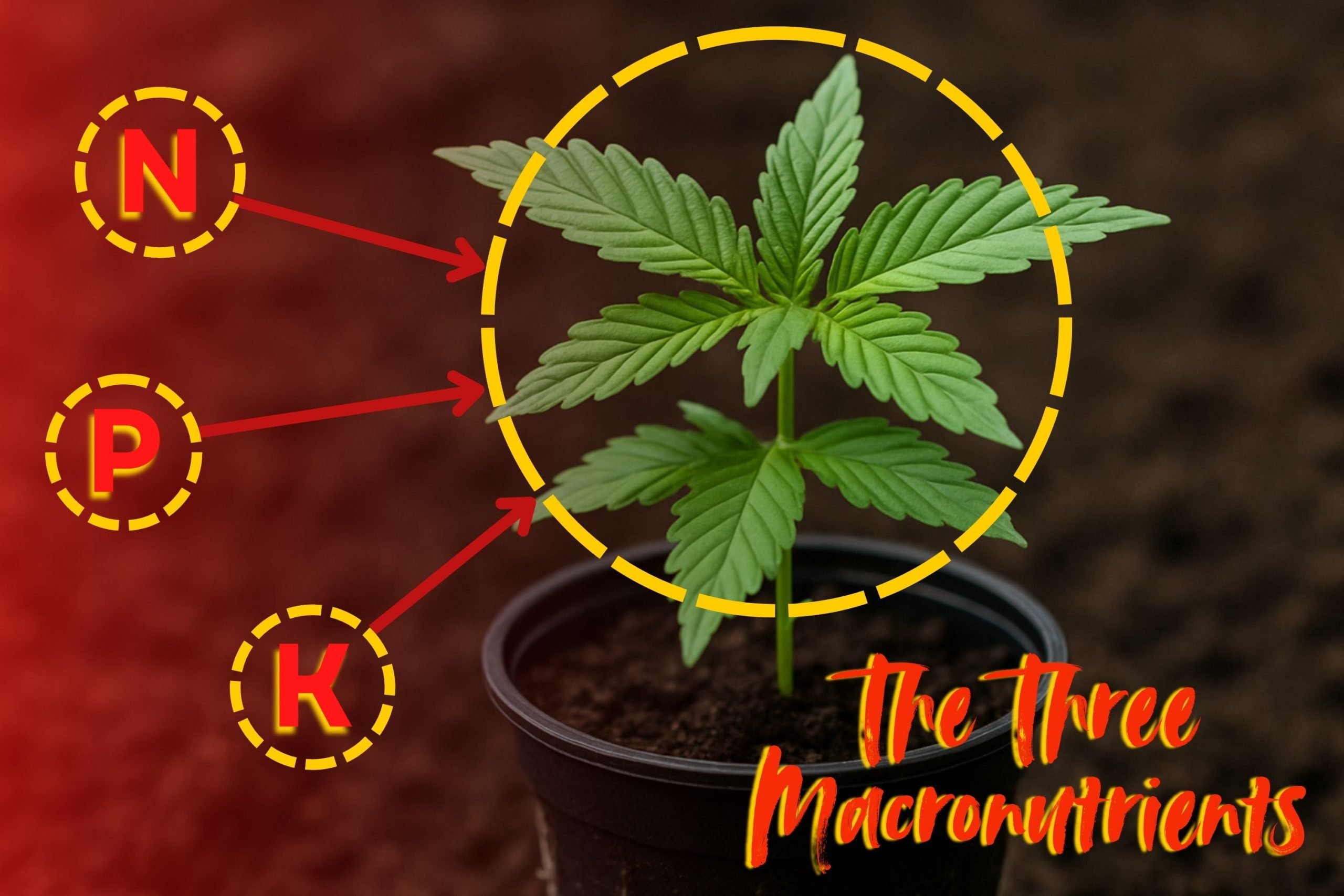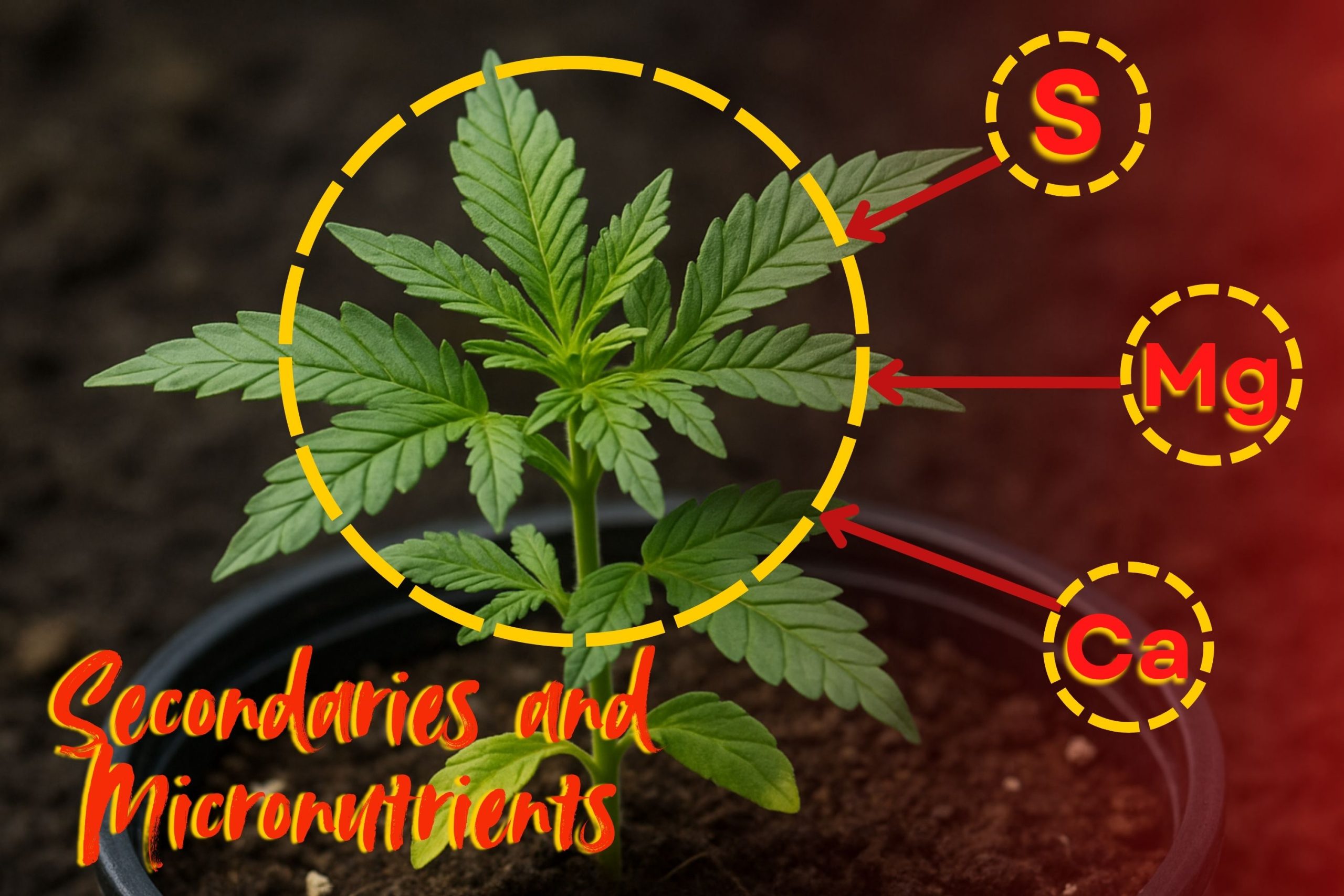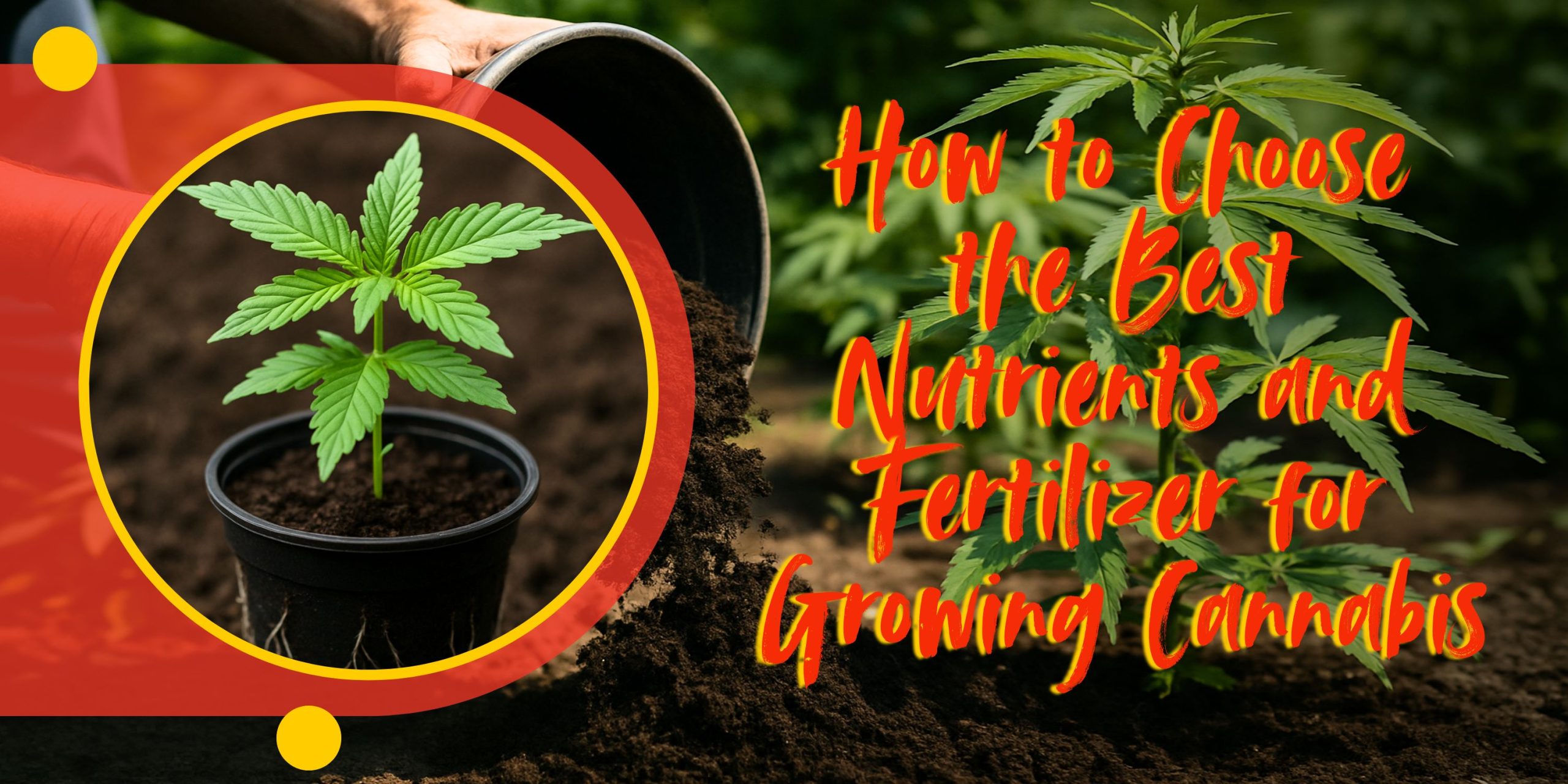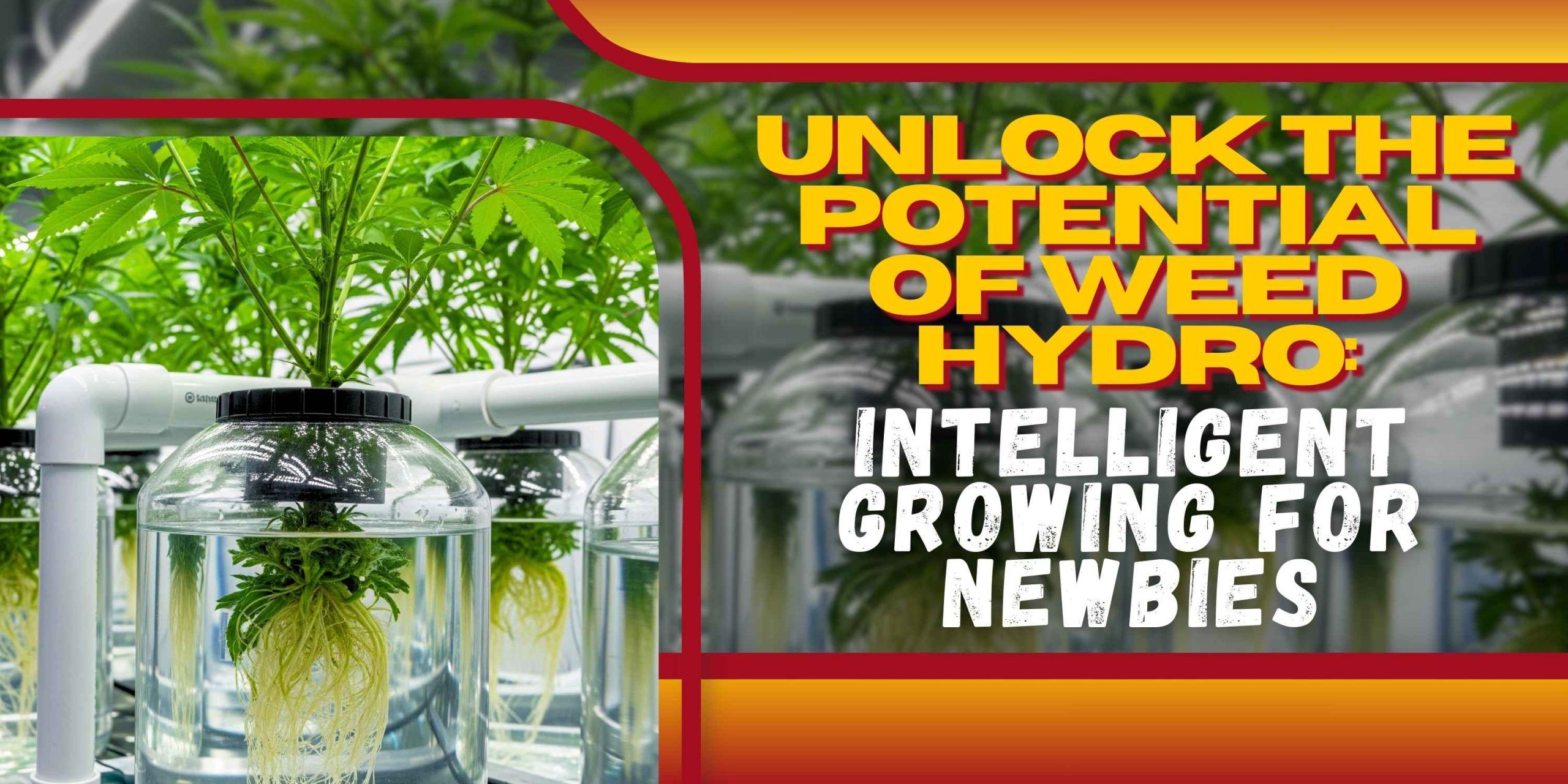Because the cannabis plant is sensitive to its nutrient environment, even a slight change in the nutrients it gets might hurt its productivity and quality. In addition to macronutrients and micronutrients, the cannabis plant also uses silicon and cobalt as beneficial elements. These are not necessary for optimum health, but they can make the plant stronger and more resistant to stress. For a farmer to keep their plants healthy, they need to be able to read visual cues about them and their nutritional context.
Light intensity, temperature, humidity, and CO₂ levels in the environment all have a direct effect on how much nutrients are needed. For instance, more light speeds up photosynthesis, which makes the plant take in more water and nutrients. To get the most out of the plant’s metabolism, the marijuana fertilizers guide needs to be flexible and take into account both the plant’s growth stage and the conditions in which it is growing.
The Three Macronutrients: Potassium, Phosphorus, and Nitrogen

At the biochemical level, all macronutrients do some things. Nitrogen not only helps plants make chlorophyll, but it also controls the making of proteins and enzymes that are important for plant metabolism. Nitrogen deficiency creates pale and growth-reduced leaves, but an overflow of nitrogen can limit flowering and promote susceptibility to disease. Getting the right amount of nitrogen is especially important when plants go from vegetative to blooming.
Phosphorus also helps in cell division and the pathways that provide signals for flowering. It assists in root extension and is vital for seed and blossom development. If there isn’t enough of anything during blooming, the buds may not form as well, and the cannabinoid content may be decreased. Potassium, on the other hand, controls how stomata work, which helps make terpenes and makes plants better able to survive dry conditions. Having the right amount of potassium also makes plants more resistant to infections and stress from the environment, so the crop stays strong no matter what conditions it is grown in.
Secondaries and Micronutrients

Calcium, magnesium, and sulfur are secondary nutrients that are needed in larger amounts than trace elements. However, they don’t get as much attention. Calcium makes plant cell walls stronger, which makes them less likely to get sick or break. It is also very important for the plant’s roots to grow and for nutrients to go through the plant. Magnesium is very important for making energy and activating enzymes because it is the main part of chlorophyll. Sulfur, on the other hand, helps make proteins and terpenes.
Micronutrients work together with macronutrients to keep plants’ metabolism running smoothly. Manganese, for instance, helps make chloroplasts and gets rid of reactive oxygen species that are made when cells are under stress. Zinc assists in hormone synthesis, especially auxins that influence growth direction. Adding the right amount of these trace elements to the soil or spraying them on the leaves makes sure that the plant’s internal systems work well and are strong.
Soil Chemistry and Nutrient Uptake
Cannabis roots need both active and passive transport systems to take in nutrients. Root hairs and connections with helpful bacteria often help with this. The rhizosphere—a dynamic interplay of roots, microorganisms, and soil—plays a crucial role in nutrient mobilization. Arbuscular mycorrhizal fungi develop symbiotic connections with cannabis roots, increasing the surface area for nutrient absorption and enhancing phosphorus and vitamin uptake.
You can’t say enough about how important pH is for dissolving nutrients. When the pH drifts outside of the optimum range, even if nutrients are present in appropriate quantities, plants may experience deficits owing to lockout. Keeping an eye on the pH of runoff and adding lime, sulfur, or pH buffers to the soil every now and again helps keep the nutrients available. In organic systems, pH stability is often enhanced by compost and humic compounds, which act as natural buffers and microbial food sources.
Different Kinds of Fertilizer for Growing Cannabis
To choose the right fertilizer for weed, you need to look at its cannabis nutrient guide, how fast it releases nutrients, and how well it works with the growing media. Organic fertilizers not only add nutrients to the soil, but they also help the growing medium stay fertile and hold water for a long time. Worm castings and compost teas are two examples of materials that can also encourage microbial life. This helps cycle nutrients more efficiently, which makes the soil ecology more balanced.
On the other hand, synthetic fertilizers give plants nutrients in forms that are ready to use right away. This makes it easy to make quick changes and keep feeding plants in high-performance growing systems like coco coir or hydroponics. But if not handled correctly, they can also mess up microbial communities and cause salt to build up. Many farmers use both organics and synthetics to improve soil health and feed their plants more precisely. This way, they may make use of the best parts of both systems while avoiding their worst parts.
Balanced and Stage-Specific Formulations
Stage-specific nutrient formulations are made to meet the changing needs of the plant’s body. During the early stages of growth, nitrogen-rich formulations help plants grow quickly by adding biomass. Bloom-specific recipes, on the other hand, focus on potassium and phosphorus to help flowers bloom. Some advanced formulas even have plant hormones, amino acids, and kelp extracts in them to help plants grow even more amid stressful changes.
The cultivar could also be something to think about while deciding on nutritional levels. During the bloom cycle, strains that eat a much may want more phosphate and potassium. Sativa-dominant phenotypes may need a longer vegetative phase with higher nitrogen. It’s also important to pay close attention to the runoff EC and how the plants react while fine-tuning nutrient regimes, especially if the commercial items are quite concentrated.
Making a Feeding Plan for Cannabis
When to fertilize cannabis? A successful feeding schedule is both proactive and reactive. It gives plants the nutrients they need while also avoiding over-fertilization. A lot of growers use a “feed-water-feed” rotation, especially in soil-based grows, to let the roots breathe and wash away small amounts of salt that build up between feedings. Adding enzymes and good bacteria to the routine can help break down leftover organic materials, which will make nutrients more available and keep roots healthy.
It’s also important to make the feeding schedule fit the plant’s shape. Plants that are taller and have more leaves may need a little more nutrients that help with transpiration, whereas compact indica plants may need less. You should change the way you feed your plants based on how often you check the color, turgor, and growth rate of their leaves. You may get more precise fertilizer administration by using tools like EC meters, pH pens, and even sap analysis.
Treating Nutrient Deficiencies and Toxins
Finding shortages and toxicities early on lets you make changes that can preserve a crop. The oldest or youngest leaves are usually the first to show visual signs, depending on whether the nutrient is mobile or not. Magnesium deficits show up on lower leaves because magnesium can move around, but calcium deficiencies show up on new growth because calcium can’t move around.
Advanced growers use tissue testing or sap analysis to find problems that aren’t visible yet. Foliar feeding for quick uptake or soil drenching with chelated minerals are two examples of changes that can be made. It’s important to remember that making too many changes can cause lockouts or secondary imbalances. Instead, always make small changes based on more than one symptom.
Advanced Nutrient Methods for Growing Cannabis
Foliar feeding is particularly beneficial for micronutrients, as they are quickly absorbed through leaf stomata. Timing is key; spraying should be done in low light or early morning to prevent leaf burn and guarantee optimum absorption. Surfactants and natural plant stimulants, like seaweed extract, can help plants take in more water and make them more resistant to stress.
Automation and accuracy are very important in hydroponics. To stop nutrients from falling out of the water or bacteria from getting in, growers need to keep an eye on the pH, EC, and temperature of the reservoir all the time. Changing the reservoir often and using clean, high-quality nutrient salts make sure that the water stays the same and doesn’t get too poisonous. Some modern systems include real-time nutrient sensors and automatic dosing devices to maintain optimal conditions 24/7.
Conclusion
To master cannabis nutrient management, you need to know a lot about how nutrients work, soil chemistry, different types of fertilizers, and the stages of plant growth. Growers may greatly improve the health, productivity, and quality of cannabis by changing the way they feed it based on its changing needs and creating healthy soil and microbial ecosystems. Using these advanced nutrition tactics makes sure that cannabis farming is sustainable, efficient, and profitable, in line with modern farming standards.















